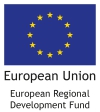The Central Baltic Programme 2014-2020 is a EU cross-border cooperation programme. Its scope is to finance high quality projects with European Development Funds in Finland (including Åland), Estonia, Latvia and Sweden, that aim at solving common challenges together and across borders. The funds (ERDF) can be applied for in calls.
The Programme supports projects in four priorities: Competitive economy, Sustainable use of common resources, Well-connected region and Skilled and socially inclusive region. You can read more about the priorities and their specific objectives from the priority pages.
The main characteristics of a project to be funded from the Central Baltic Programme include:
The Central Baltic Programme 2014-2020, belongs to the European Territorial Cooperation framework (ETC). The ECT, better known as Interreg, represents one of the two goals of cohesion policy and provides a framework for the implementation of joint actions and policy exchanges between national, regional and local actors from different Member States. The overarching objective of European Territorial Cooperation (ETC) is to promote a harmonious economic, social and territorial development of the Union as a whole. Interreg is built around three strands of cooperation: cross-border (Interreg A), transnational (Interreg B) and interregional (Interreg C).
Five programming periods of Interreg have succeeded each other:
INTERREG I (1990-1993) - INTERREG II (1994-1999) - INTERREG III (2000-2006) - INTERREG IV (2007-2013) - INTERREG V (2014-2020).
The Programme supports projects in four priorities: Competitive economy, Sustainable use of common resources, Well-connected region and Skilled and socially inclusive region. You can read more about the priorities and their specific objectives from the priority pages.
The main characteristics of a project to be funded from the Central Baltic Programme include:
- Thematic focus in one of the four priorities
- Cross-border cooperation as a clear added value to address common challenges
- Project partners from at least two countries of the programme area
- Project results that contribute to the result and output indicators of the programme
- Project results are sustainable and live on after the project ends
- Project partners are public organisations, NGOs and private partners according to relevance in project implementation
The Central Baltic Programme 2014-2020, belongs to the European Territorial Cooperation framework (ETC). The ECT, better known as Interreg, represents one of the two goals of cohesion policy and provides a framework for the implementation of joint actions and policy exchanges between national, regional and local actors from different Member States. The overarching objective of European Territorial Cooperation (ETC) is to promote a harmonious economic, social and territorial development of the Union as a whole. Interreg is built around three strands of cooperation: cross-border (Interreg A), transnational (Interreg B) and interregional (Interreg C).
Five programming periods of Interreg have succeeded each other:
INTERREG I (1990-1993) - INTERREG II (1994-1999) - INTERREG III (2000-2006) - INTERREG IV (2007-2013) - INTERREG V (2014-2020).


